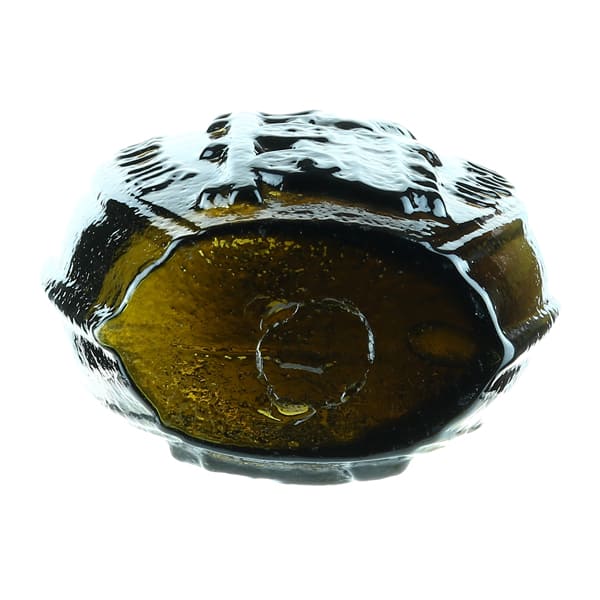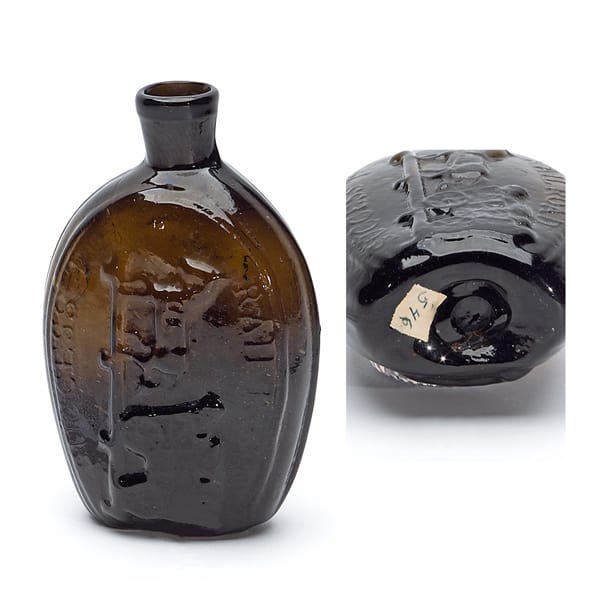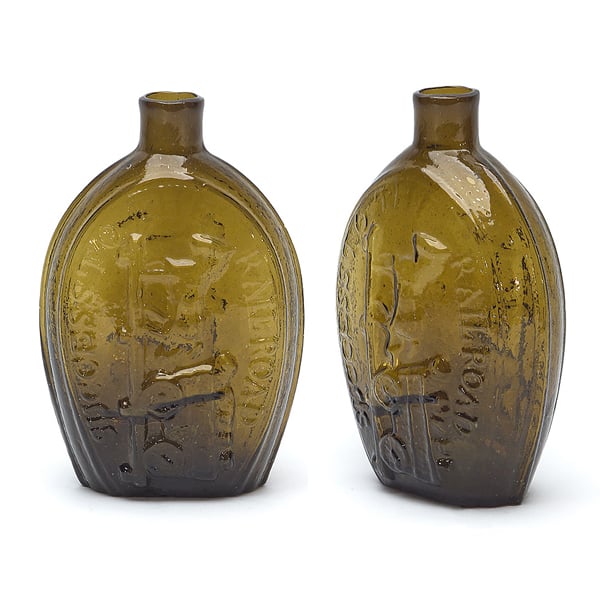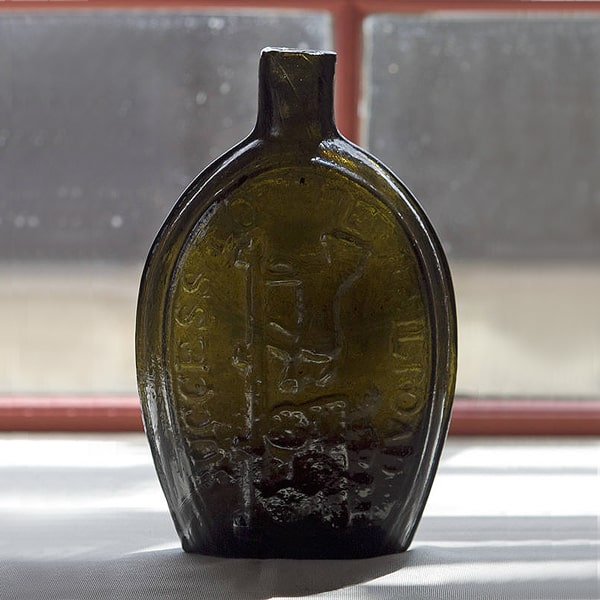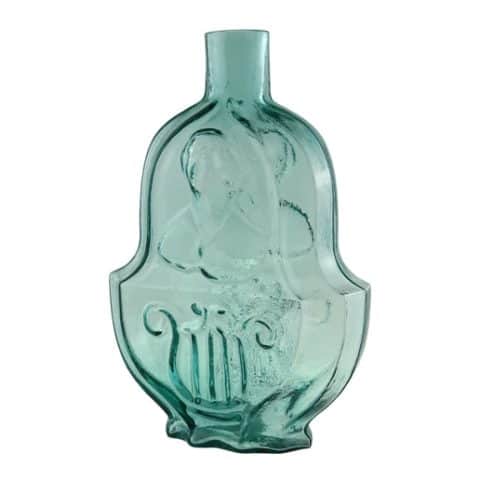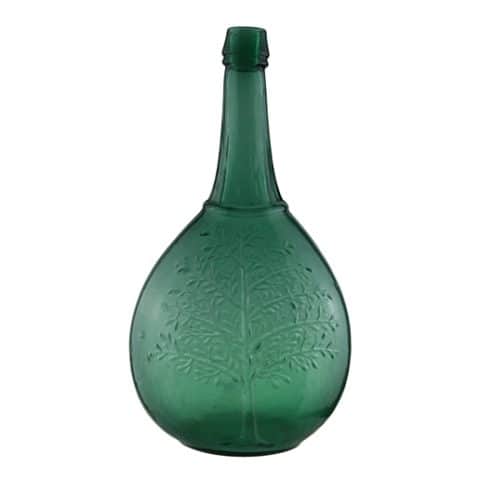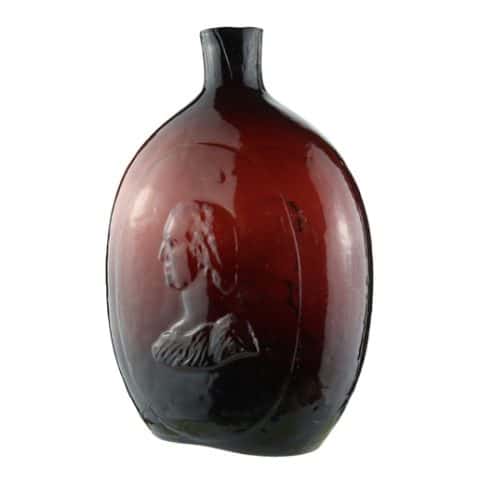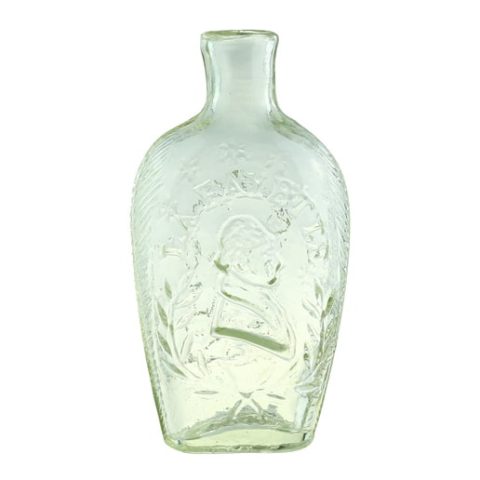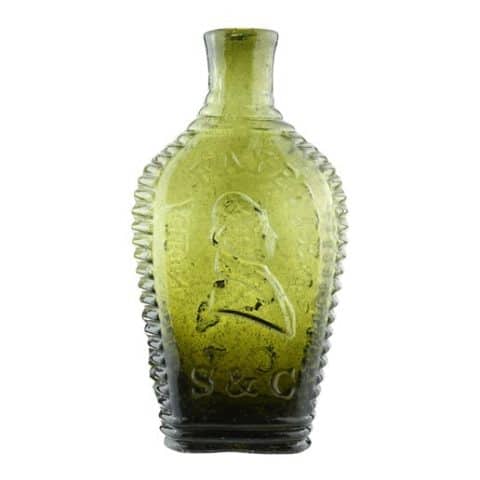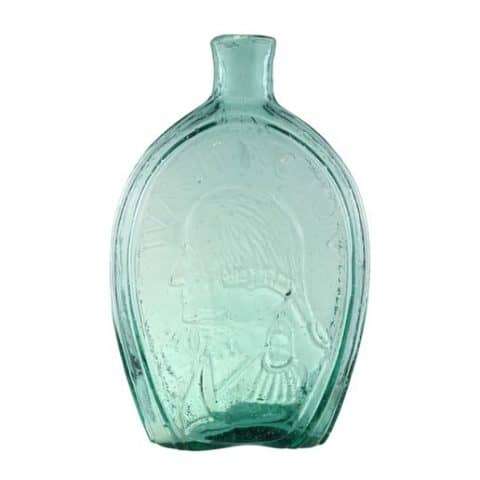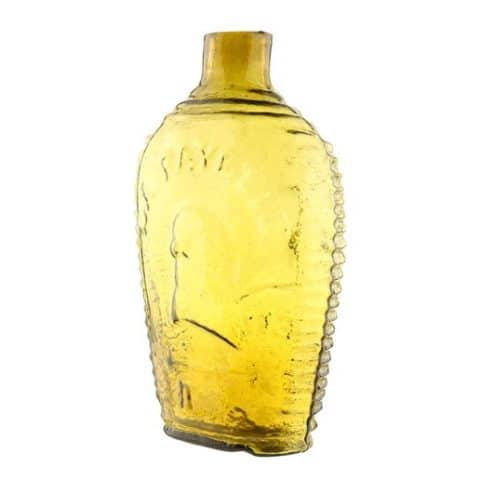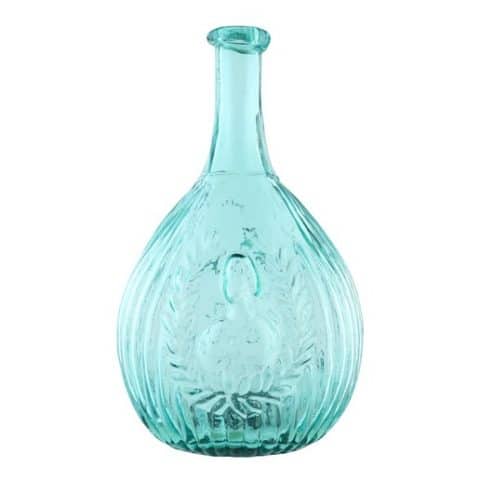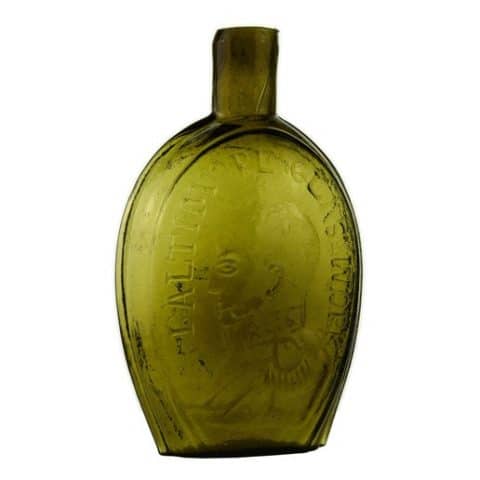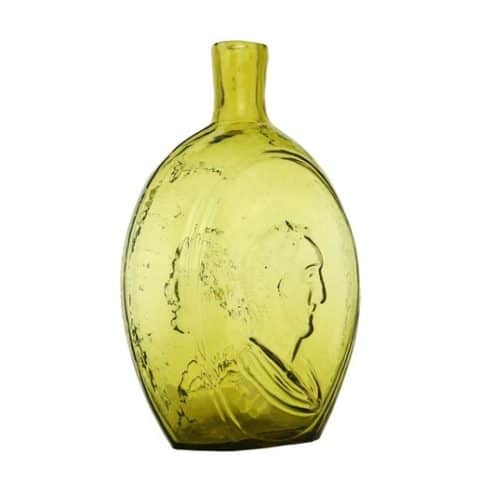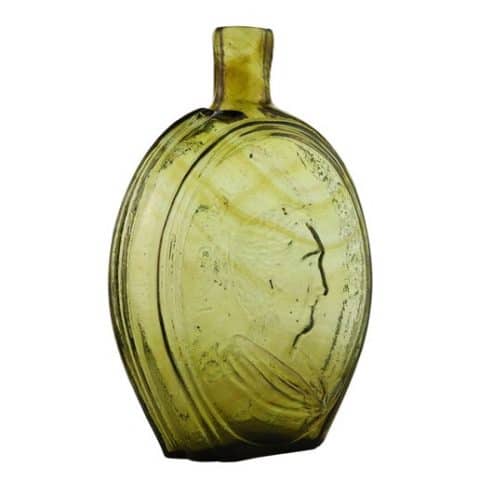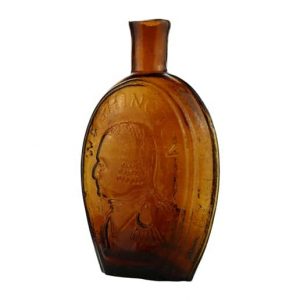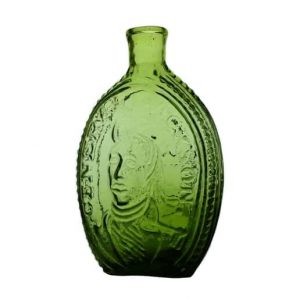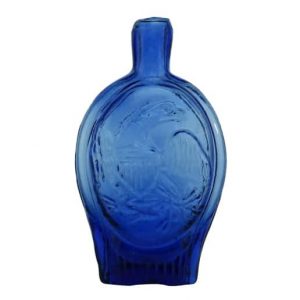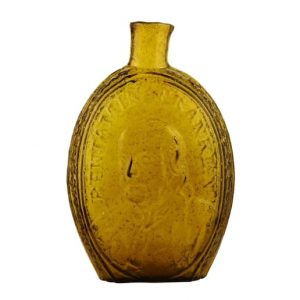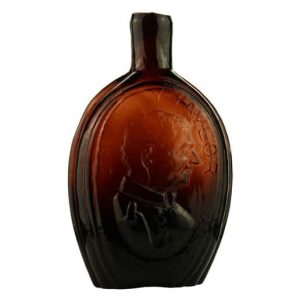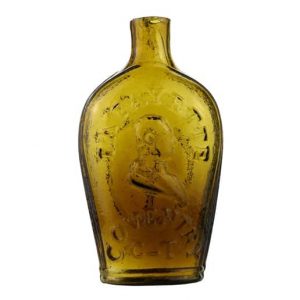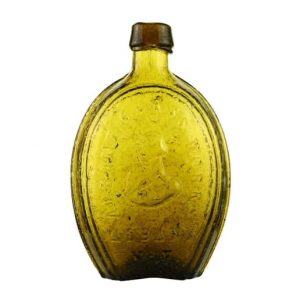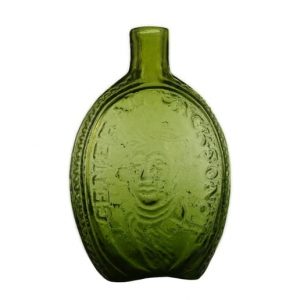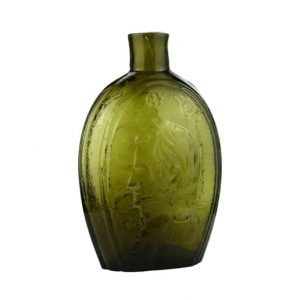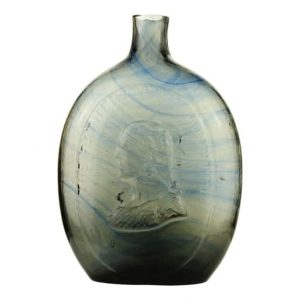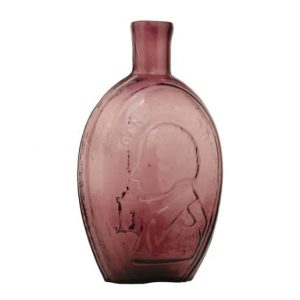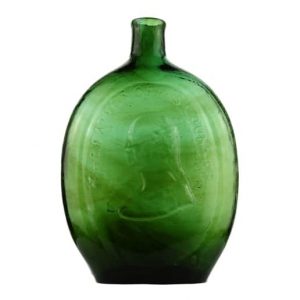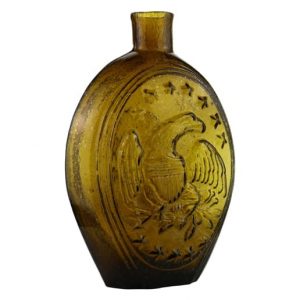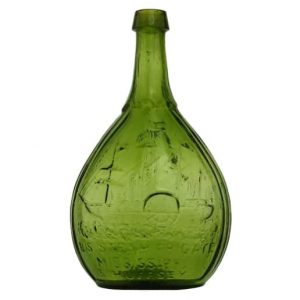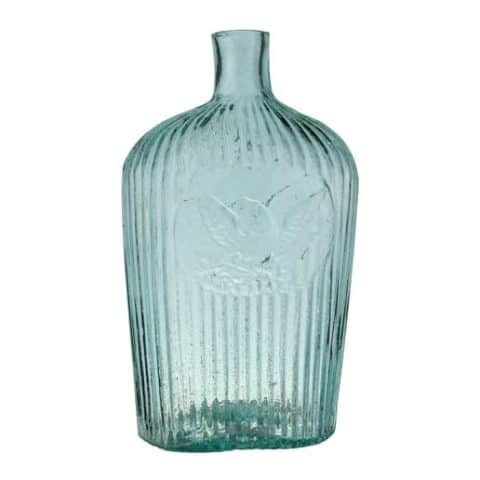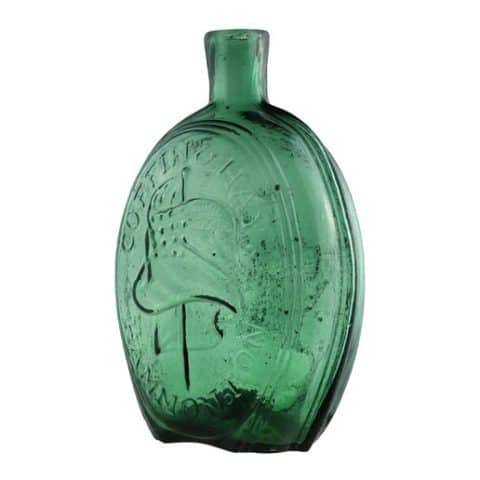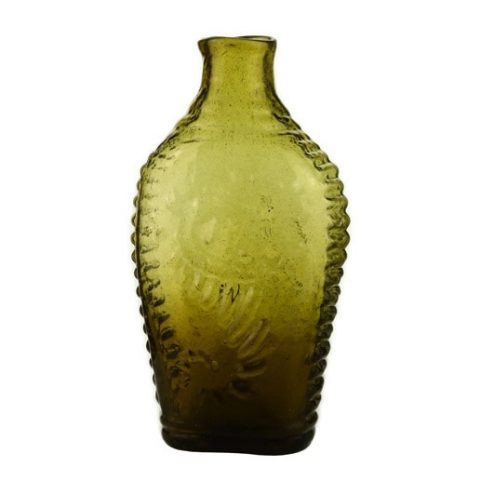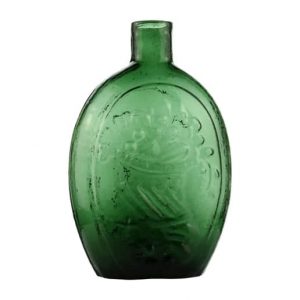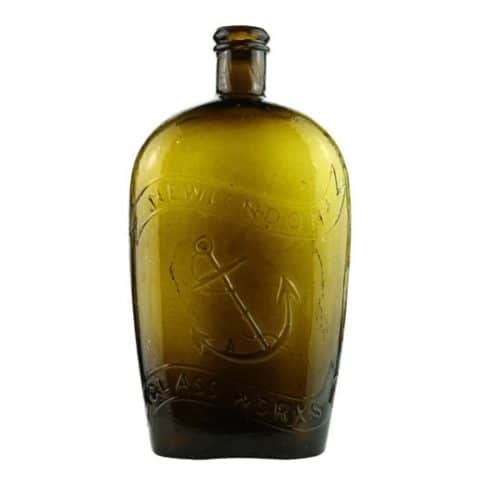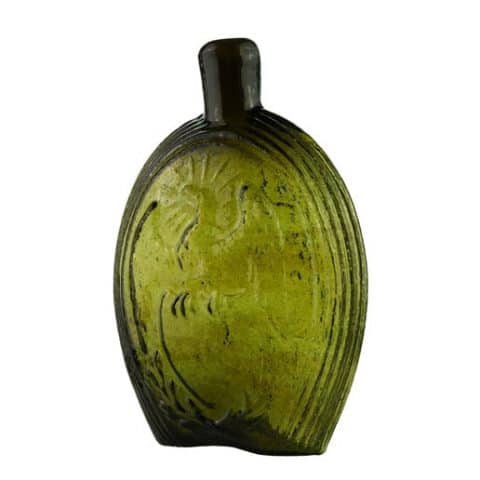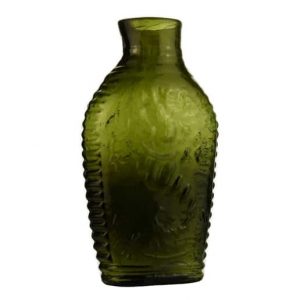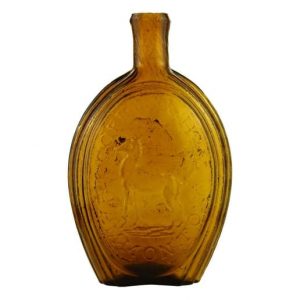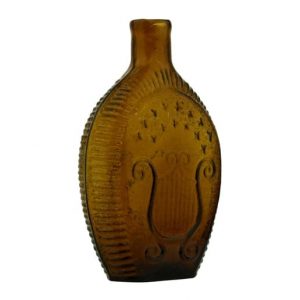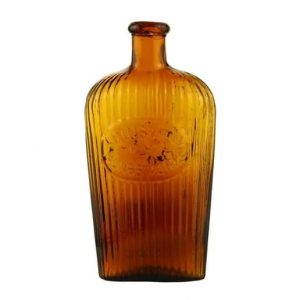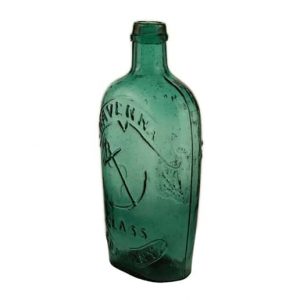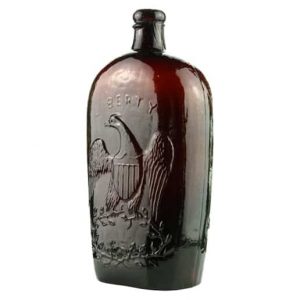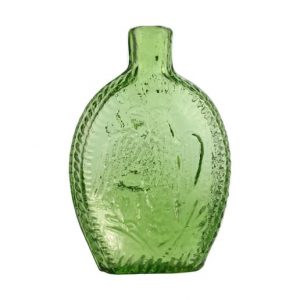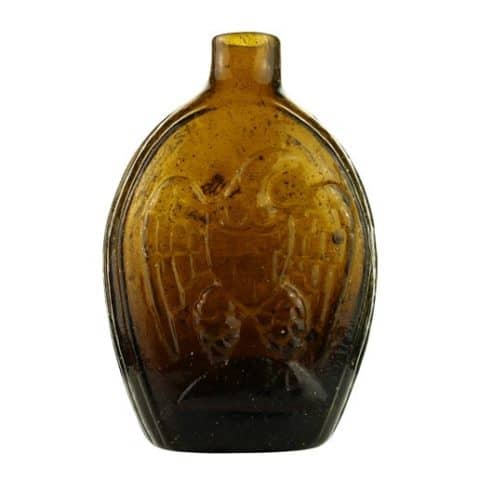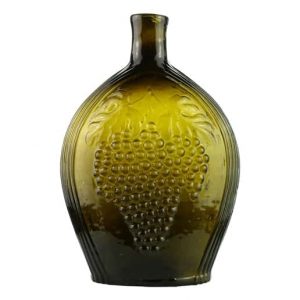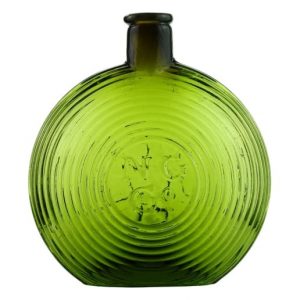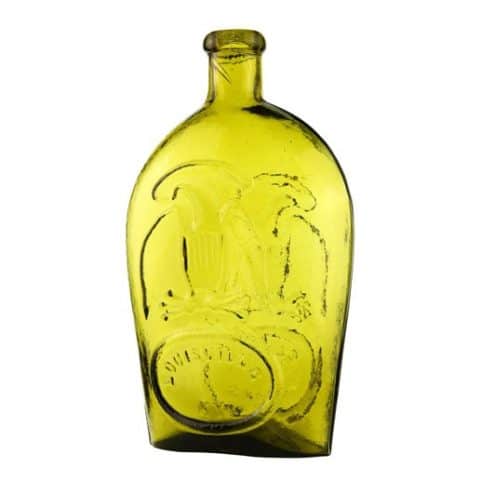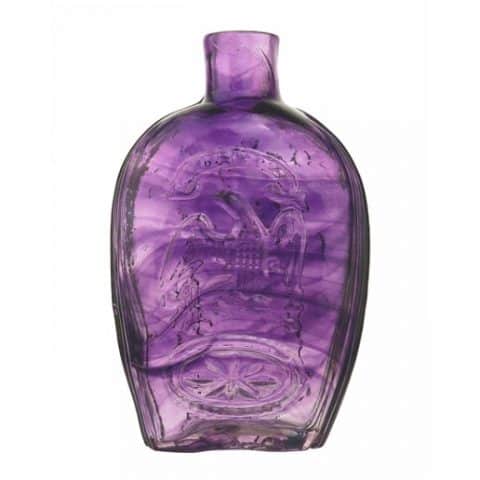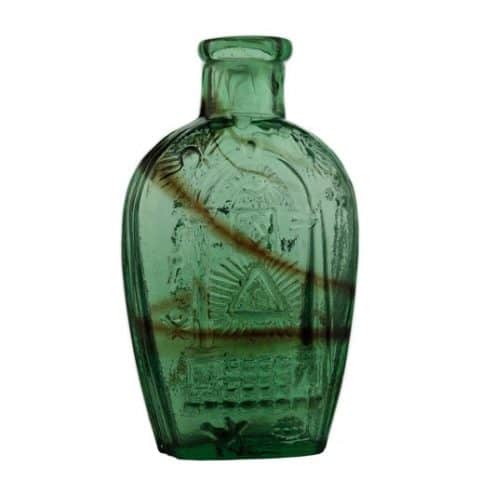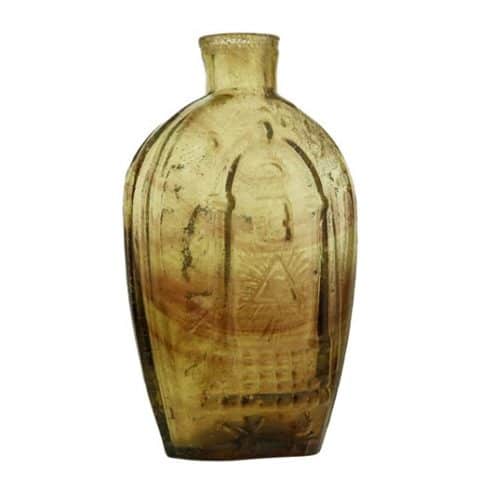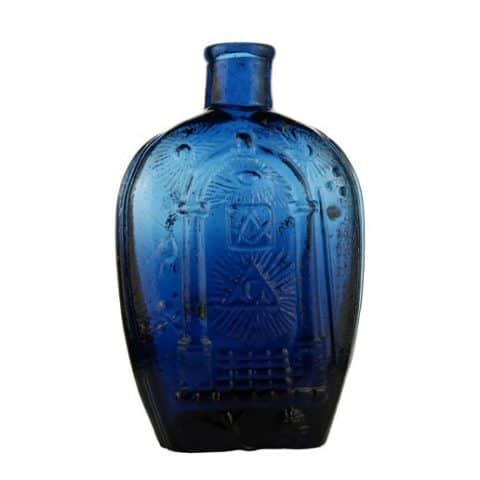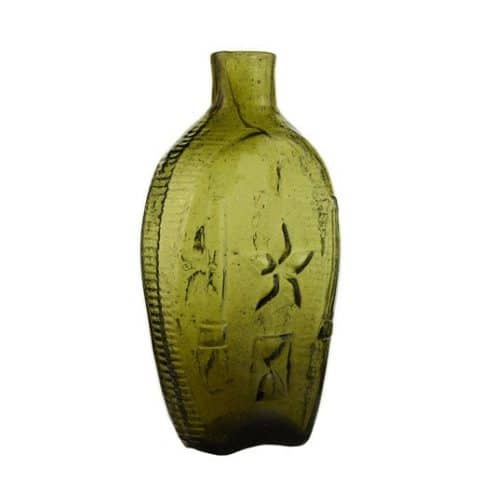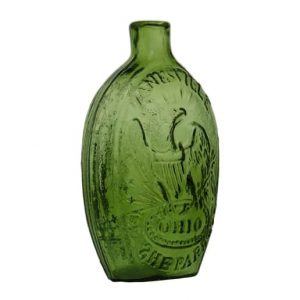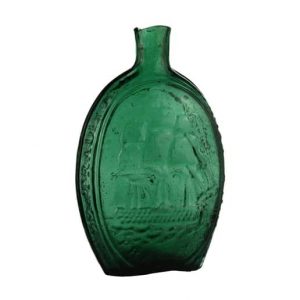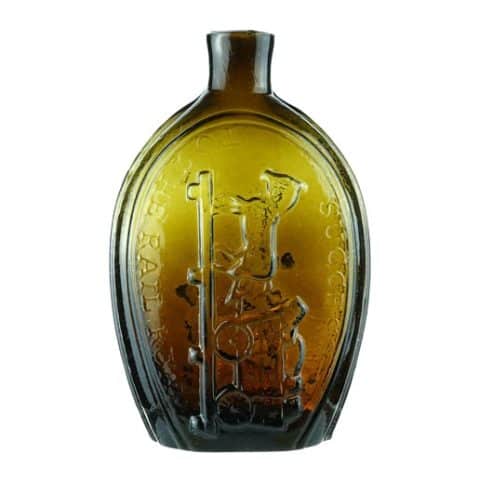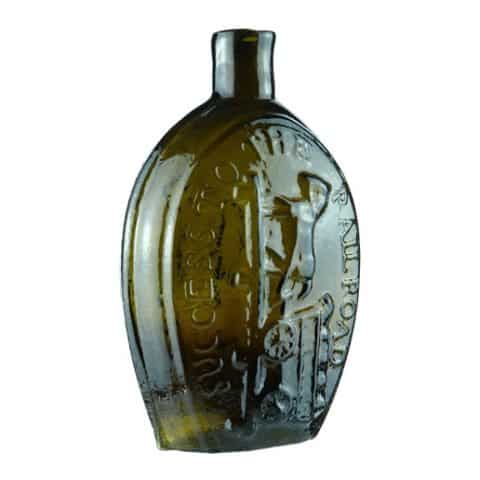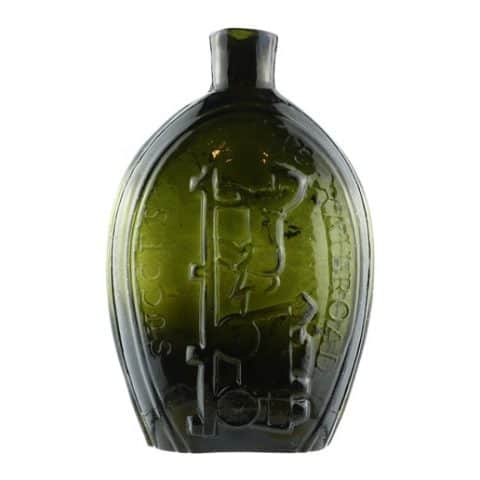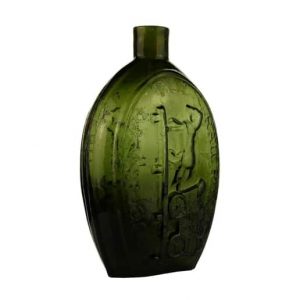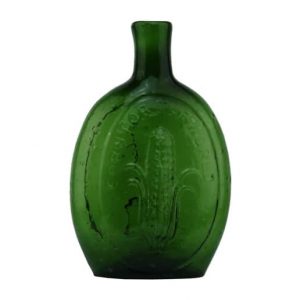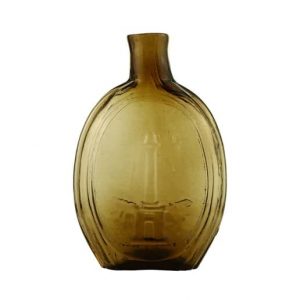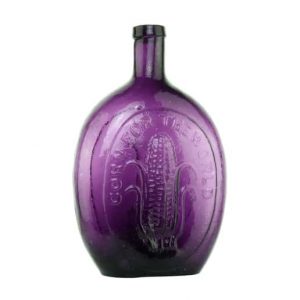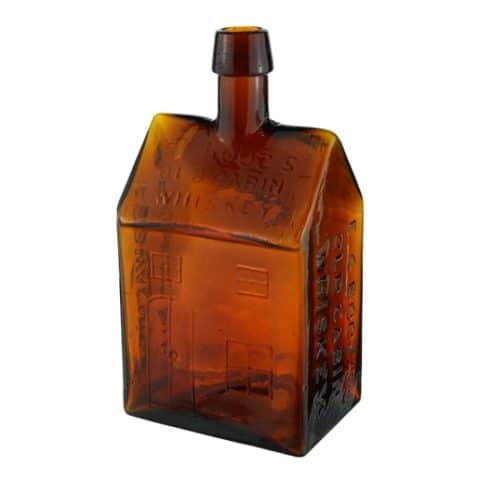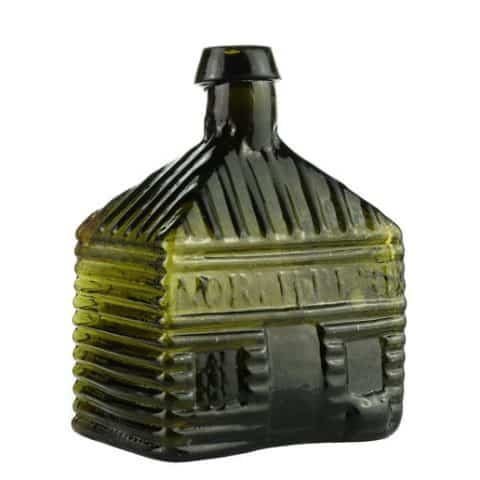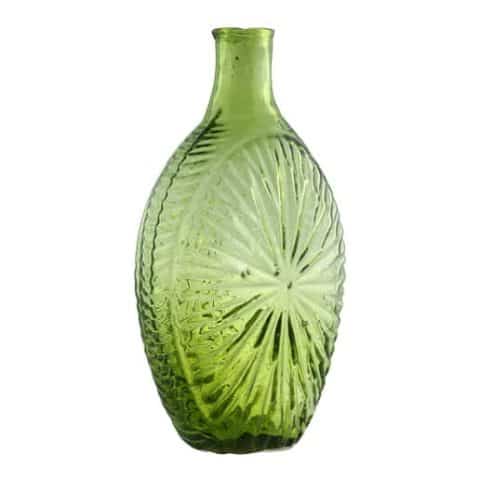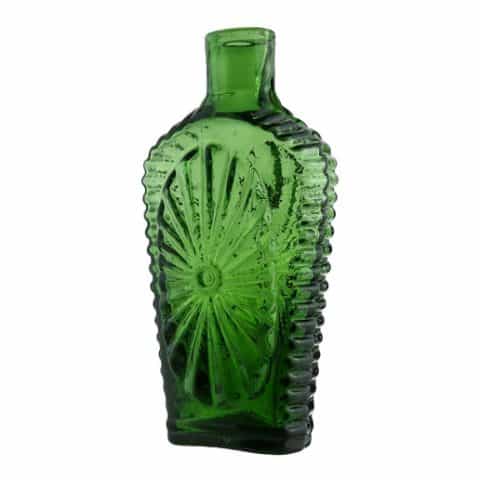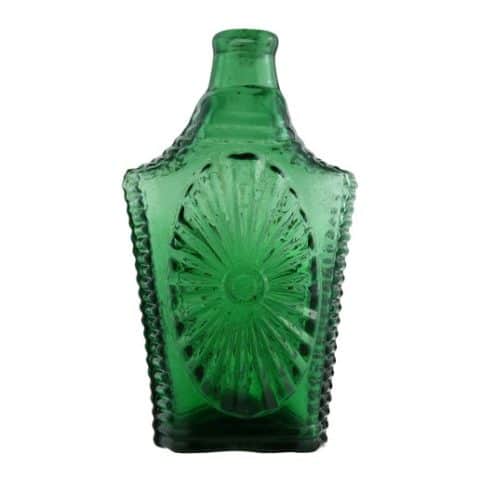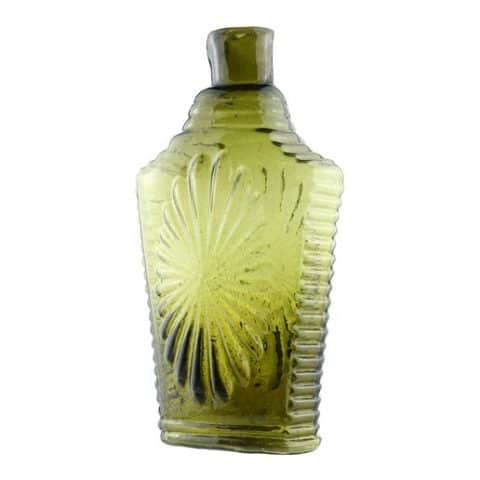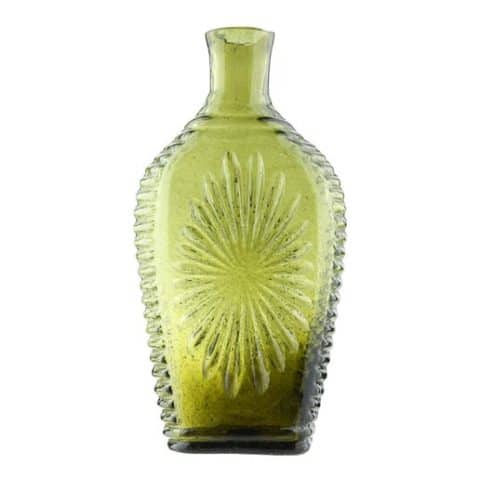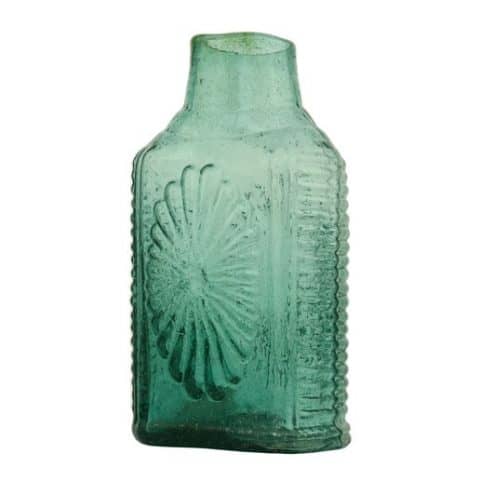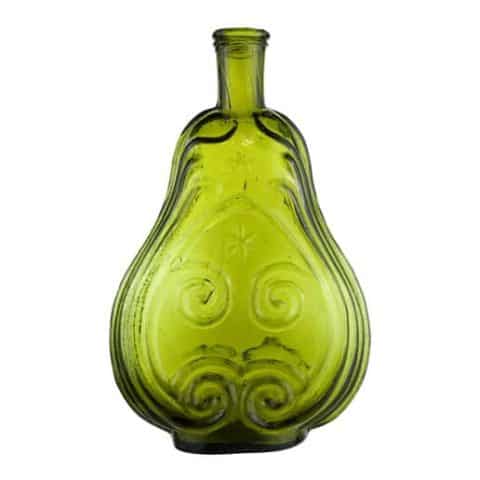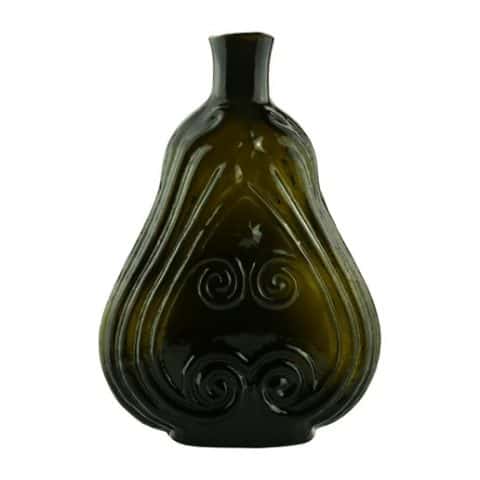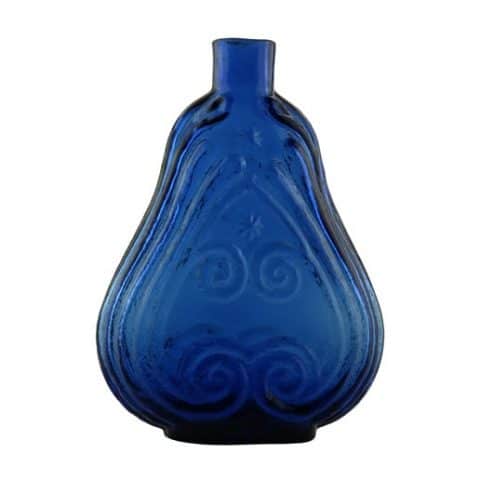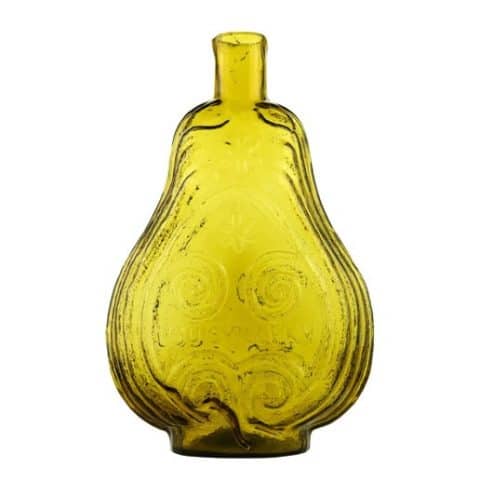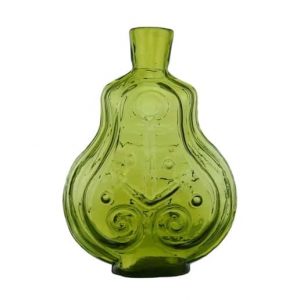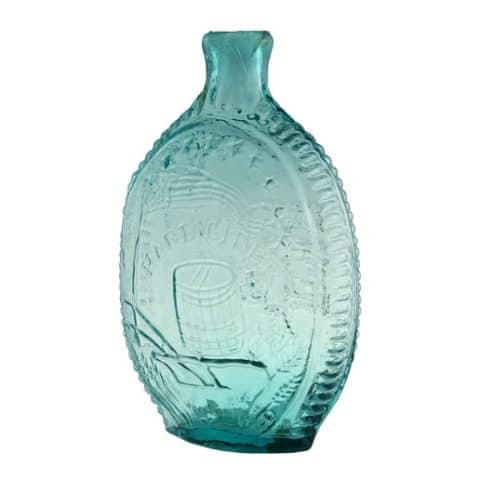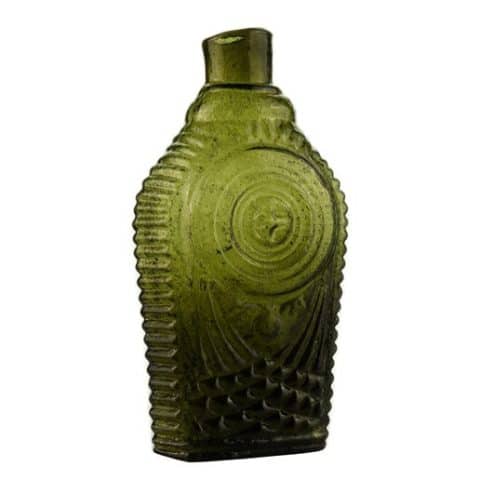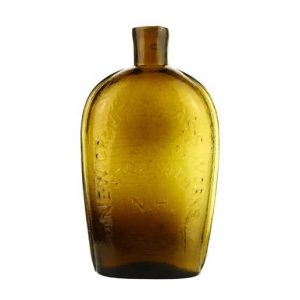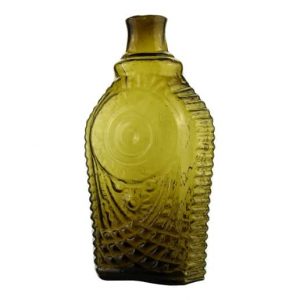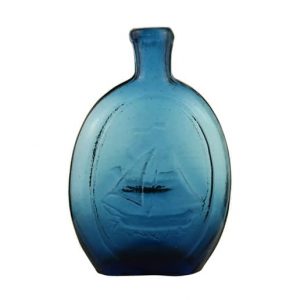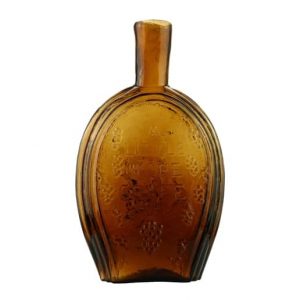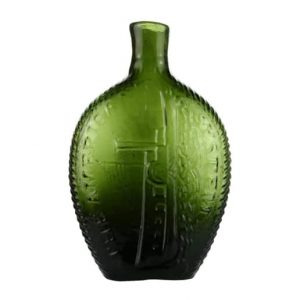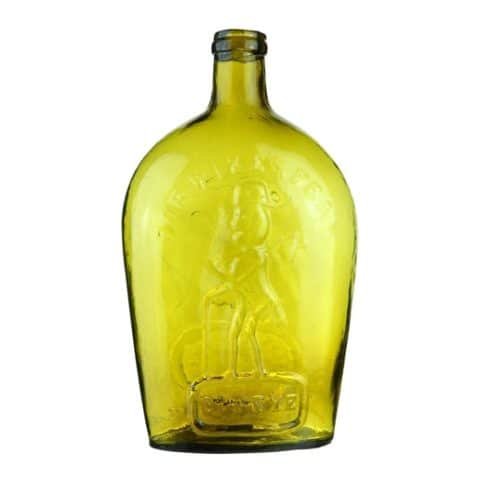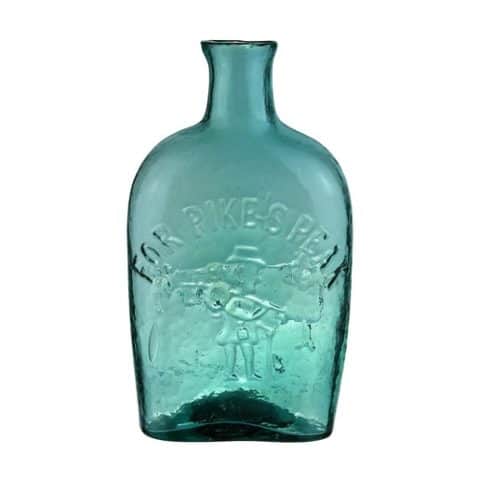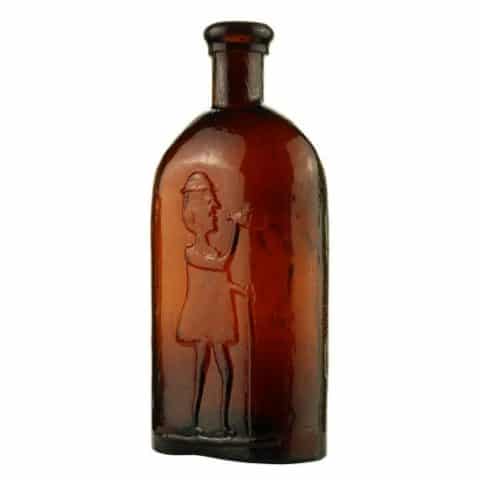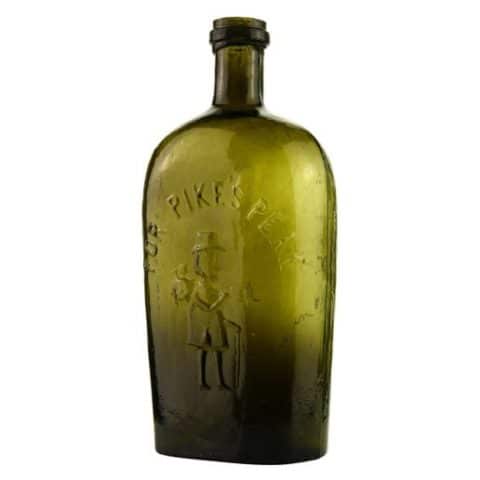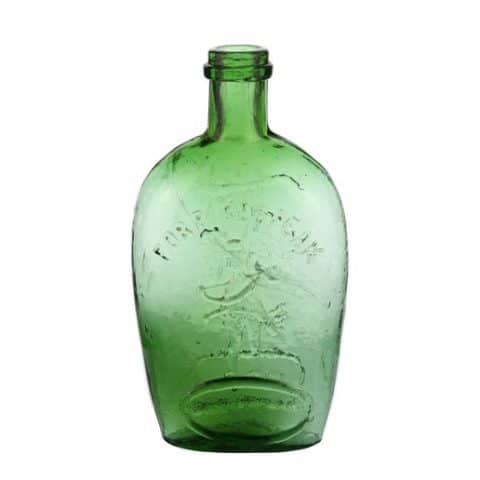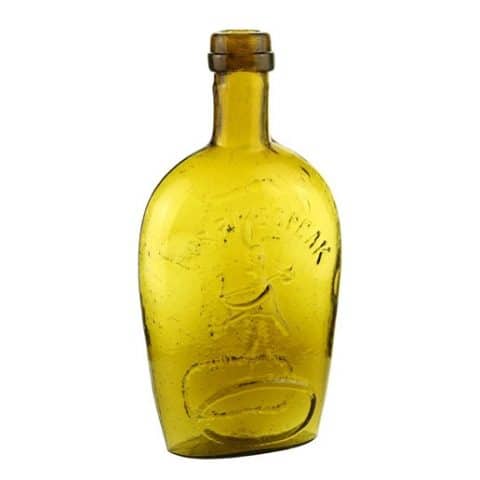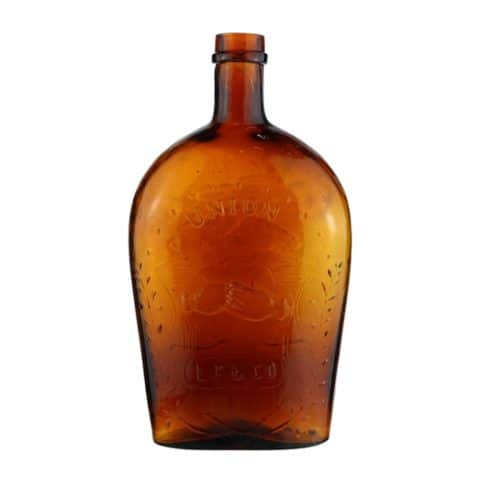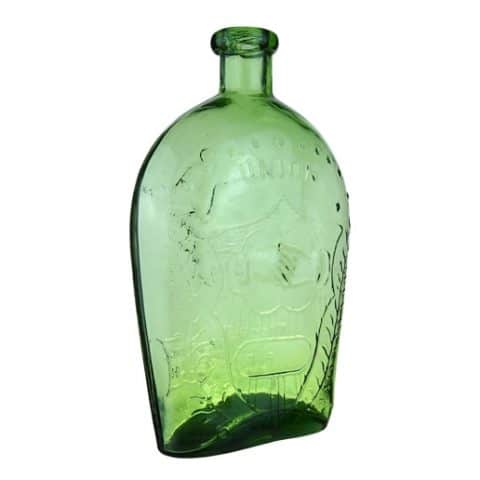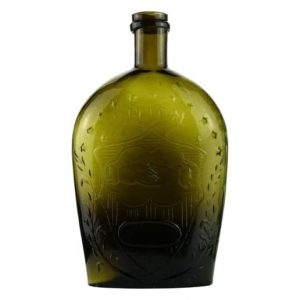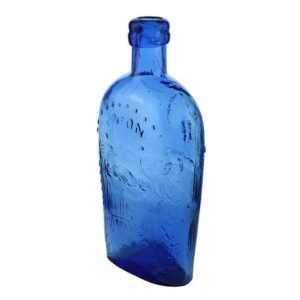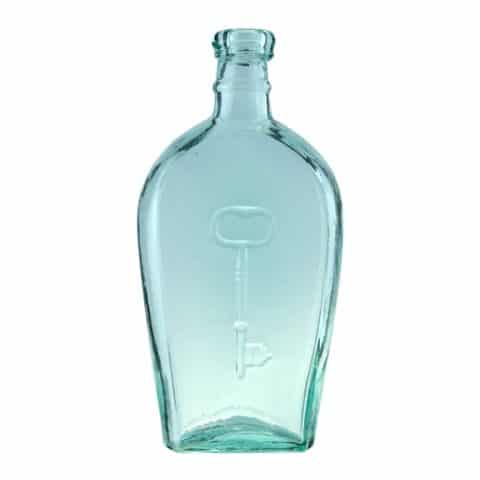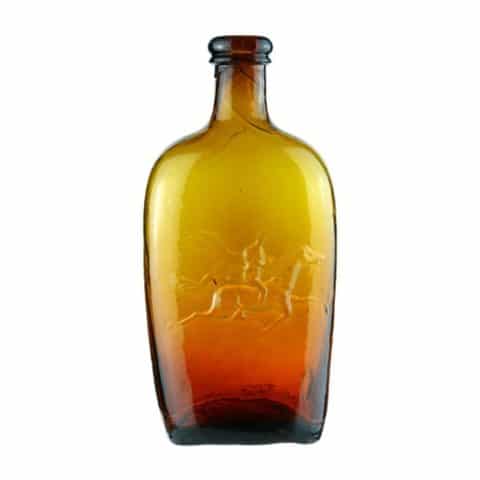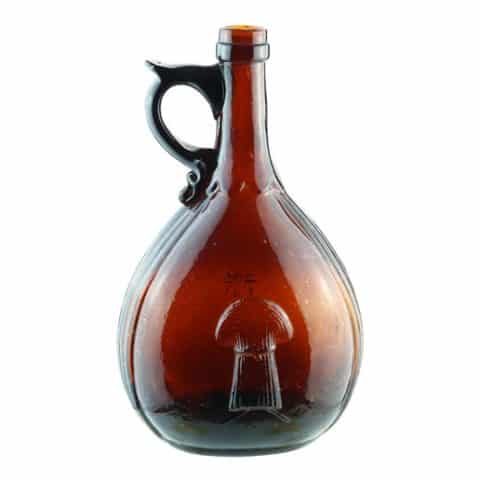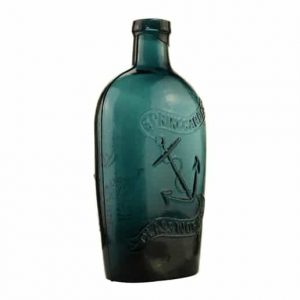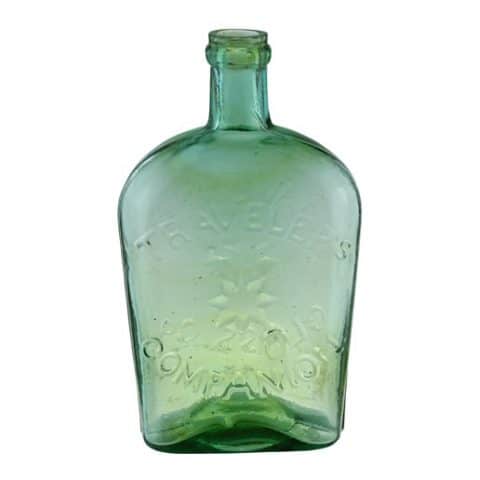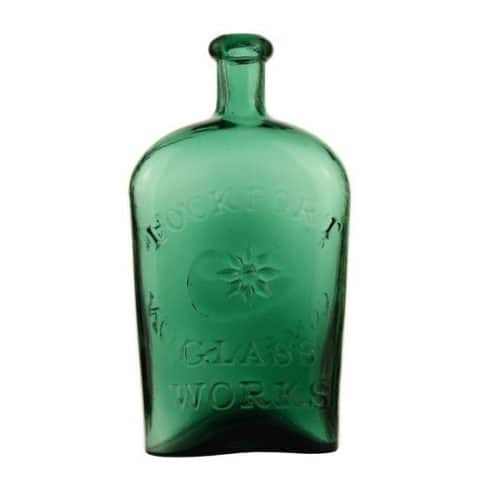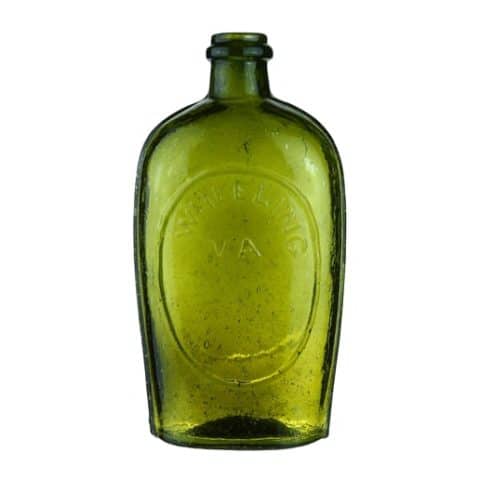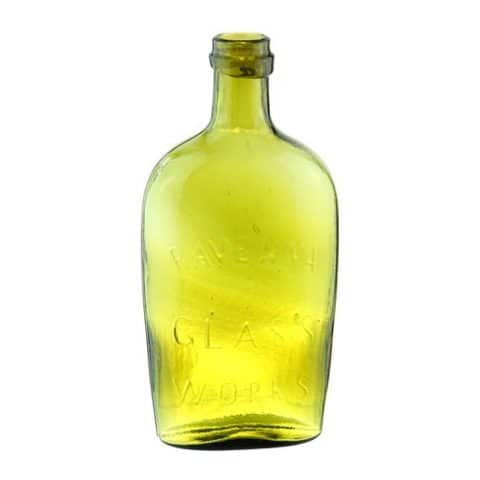GV-3 • “Success To The Railroad” Historical Flask
GV – 3
“Success To The Railroad” And Horse and Cart
Historical Flask
Keene Marlboro Street Glassworks, Keene New Hampshire
Olive Amber Pint
Provenance: Chris Bubash Collection

While the “Success to the Railroad” GV-2 flask in our museum pictures a “steam locomotive,” this museum example of a GV-3 pint “Success to the Railroad” flask features a “horse and cart railroad” on both sides. During the throes of the Industrial Revolution, there were horses pulling carts on rails as the Baltimore & Ohio Railroad ran on horsepower. Eventually steam would win over and transportation would be changed forever.
The railroad or railway, both the horse-and-cart type and the steam locomotive, inspired many early American flask designs. Of the fourteen railroad flasks charted, the slogan “Success to the Railroad” appears on seven.
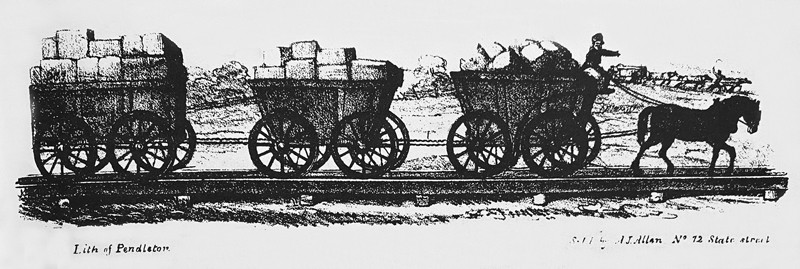
The illustration segment above is from David C. Johnson’s lithograph of the “Granite Railway” operating out of Quincy, Massachusetts. The railway, which opened on October 7, 1826, was the first in the United States. Horse-drawn carts carried the granite block for the Bunker Hill Monument 2 ¾ miles from the quarry to Neponset River.
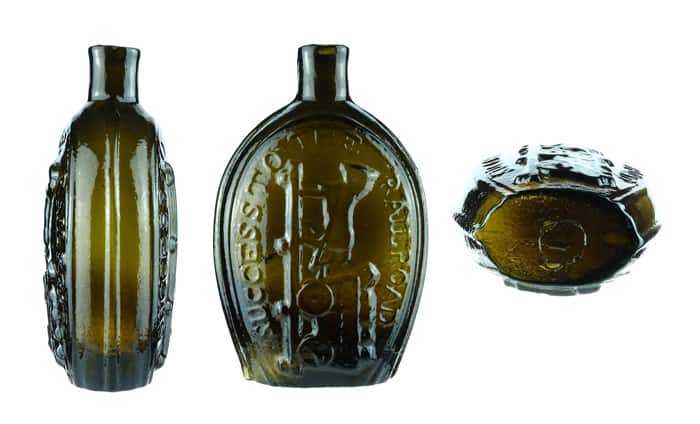
When looking at our subject GV-3, the obverse side has designs on oval panels. There is an embossed horse pulling a cart to the left on a rail. The cart is filled with kegs. The side of the cart is subdivided into six quadrangle panels containing a pattern of ribs radiating from a central dot. Only a portion of a panel appears over each wheel. Embossed in large serifed letters is ‘SUCCESS TO THE RAILROAD’ reading in a semicircle from the bottom of the panel around the horse and cart to the bottom of the other side of the panel. The “O” in “TO” is in the angle of the rail and tie. The letters “AIL” and “AD” in “RAILROAD” are connected at the bottom. The end of the rail at the right is angled.
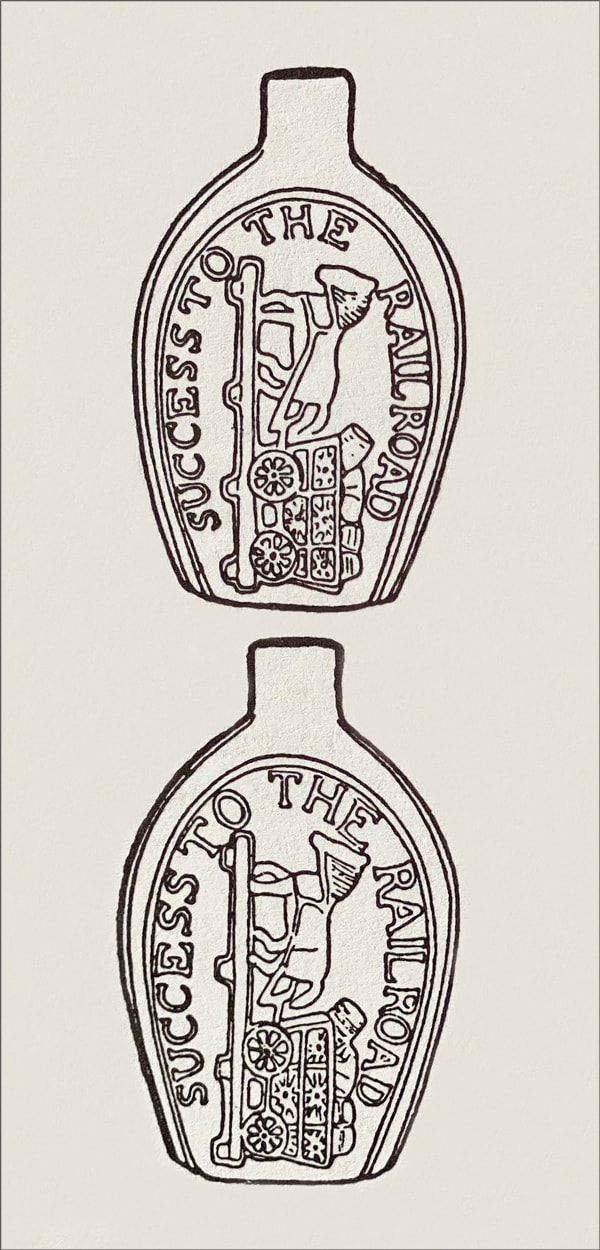
The reverse embossed image is similar to the obverse but the “O” in “TO” is at the end of the rail. The “RA” in “RAILROAD” is connected at the bottom. The “IL” is in a different position and there is a slight difference in some of the letters. The wheels of the cart have eight spokes. The end of the rail at the right is a straight line. On both the obverse and the reverse, the mane shows very definitely on the neck of the horse, in the form of fine vertical lines.
The pint was probably made at the Keene-Marlboro Street glassworks in New Hampshire. The glassworks opened under the direction of Henry Schoolcraft and his two partners in 1815 and continued in operation under a bewildering variety of operating firms for the next 35 years. Although the vast majority of the plant’s products appear to have been unmarked, the factory made several flasks embossed with initials of an owner or the location name—all of which may be closely dated.
The flask has a plain lip and tubular pontil mark. The edges are vertically ribbed with a heavy medial rib. Known colors are aquamarine, clear golden amber, olive-amber, dark-olive green, and brilliant amber.
See the museum example of a GV-4 Success to the Railroad flask.
See the museum example of a GV-5 Success to the Railroad flask.
Primary Image: GV-3 “Success to the Railroad” and Horse Pulling Cart historical flask imaged on location by Alan DeMaison, FOHBC Virtual Museum Midwest Studio
Support: Reference to American Bottles and Flasks and Their Ancestry by George S. and Helen McKearin, Crown Publishers Inc., New York, 1978.
Support: Reference to Keene-Marlboro-Street Glassworks by Bill Lockhart, Beau Schriever, Bill Lindsey, and Carol Serr
Support Image: Auction Lot 96: “Success To The Railroad” And Horse And Cart Historical Flask, Keene Marlboro Street Glassworks, Keene, New Hampshire, 1830-1850. Deep olive amber, sheared mouth – tubular pontil scar, pint; (somewhat weakened impression on shoulder). GV-3 A crude heavy example. Nice deep color. – Norman Heckler Jr. & Sr., Norman C. Heckler & Company, Auction #107
Support Image: Auction Lot 67: “Success To The Railroad” And Horse And Cart Historical Flask, Keene Marlboro Street Glassworks, Keene, New Hampshire, 1830-1850. Deep yellow olive, sheared mouth – pontil scar, pint; (light exterior high point wear). GV-3 A crude flask with thick glass and attractive surface swirls. Fine condition. Ed & Sherry Losacano collection. – Norman Heckler Jr. & Sr., Norman C. Heckler & Company, Auction #148
Support Image: Auction Lot 211: “Success To The Railroad” Historical Flask, Keene Marlboro Street Glassworks, Keene, New Hampshire, 1820-1840. Bright yellow amber, sheared mouth – pontil scar, pint; (minor wear). GV-3 Interesting fold in the glass. Fine condition. – Norman Heckler Jr. & Sr., Norman C. Heckler & Company, Auction #105
Join the FOHBC: The Virtual Museum is a project of the Federation of Historical Bottle Collectors (FOHBC). To become a member.

